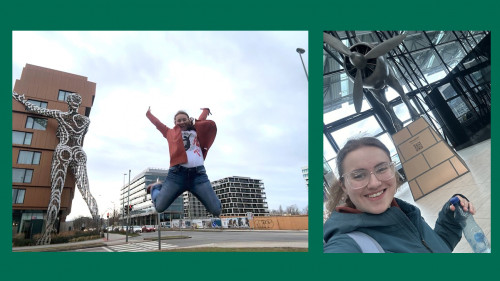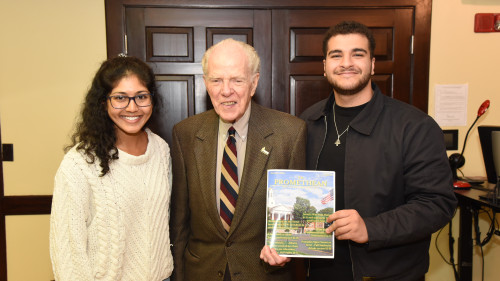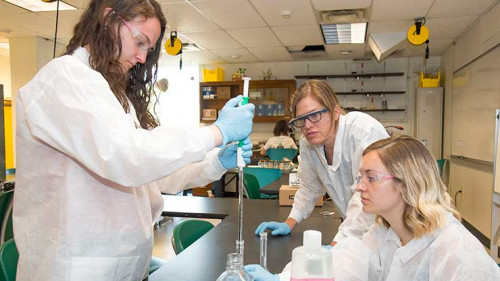
Siena College and The Dudley Observatory have signed an agreement to enter into a long-term partnership to build and enhance the astronomy education and public outreach activities of both institutions.
The agreement is not a formal merger, and Siena and Dudley will remain two distinct entities. Going forward, Dudley will be formally known as The Dudley Observatory at Siena College, and its operations will be housed at the College.
Siena will make available its astronomy facilities, equipment, faculty and students to support Dudley’s outreach and education goals. Those facilities include the Breyo Observatory, which features the Capital Region’s largest telescope. Its viewing platform atop Roger Bacon Hall also has permanent mounts for five smaller telescopes, including a 14-inch telescope contributed by Dudley.
Representatives from Siena and Dudley held a joint signing ceremony on Dec. 3 in Roger Bacon.
The Dudley Observatory is a nationally-recognized, 160-year-old, nonprofit institution dedicated to astronomy education, outreach, and science history. In partnership with Siena
it will develop and deliver astronomy education programs for area K-12 students, adults and teachers through star parties, public lectures, observatory programs, summer camps, teacher workshops and other special events.
“This partnership is a tremendous force multiplier in programming both for Siena and Dudley,” said President Chris Gibson ‘86, Ph.D. “It will enable us to inaugurate a new chapter in science education as we collaborate to deliver top-quality astronomy programs for youth and adults throughout the Capital Region.”
“Our public outreach potential has increased exponentially with this agreement,” said Gregory P. Nowell, Ph.D., president of Dudley. “We will continue to build upon our partnerships with area schools as well as cultural and community organizations and amateur astronomers.”
“Astronomy was humanity’s first science, from when shepherds centuries ago used the stars to gauge time,” said John Cummings, Ph.D., dean of Siena’s School of Science and professor of physics. “Since then, astronomy has been a ‘gateway science’ for many people, and we look forward to welcoming the public to the Siena campus to enjoy the excellent programming developed by Dudley.”
Dudley is seeking to hire a full-time Ph.D. astronomer to direct its science education programs. The new astronomer will work closely with Siena’s School of Science, particularly with faculty and students in the Department of Physics & Astronomy, which is one of the largest baccalaureate physics departments in the country, with nine full-time faculty, including three Ph.D. astronomers, and approximately 90 students majoring in astrophysics, physics, applied physics, and computational physics.
“Partnering with Dudley will provide tremendous new opportunities for our undergraduate students to engage with the public, particularly elementary and high school students who will become the next generation of scientists,” noted John Moustakas, Ph.D., department chair and associate professor of physics.
Physics/astronomy students Kristina Gatto ’24, Josephine Swann ’25 and Noah Franz ’23 were on hand for the signing ceremony.
“What really confirmed my interest in astronomy and pushed me to pursue it was the first time I went to an observatory as a sophomore in high school,” said Gatto. “I always had an interest in astronomy but after visiting an actual observatory and seeing the telescope and astronomers in action, I knew it was something I had to be a part of. I know this partnership will absolutely benefit not only students at Siena but also the local community by providing opportunities to explore the field of astronomy and inspiring that interest in children and teens alike.”
Swann also said that Siena’s observatory confirmed her decision to enroll here.
“It’s great that there will be even more community outreach about the physics and astronomy programs.”
Franz said the Siena-Dudley agreement “opens many doors for public outreach and education.”
“I first became interested in astronomy in elementary school through a public observing night at a local science museum,” he said. “Through this new agreement, I'm hoping we can provide the same public outreach opportunities for elementary students around Albany that I received as a child.”

